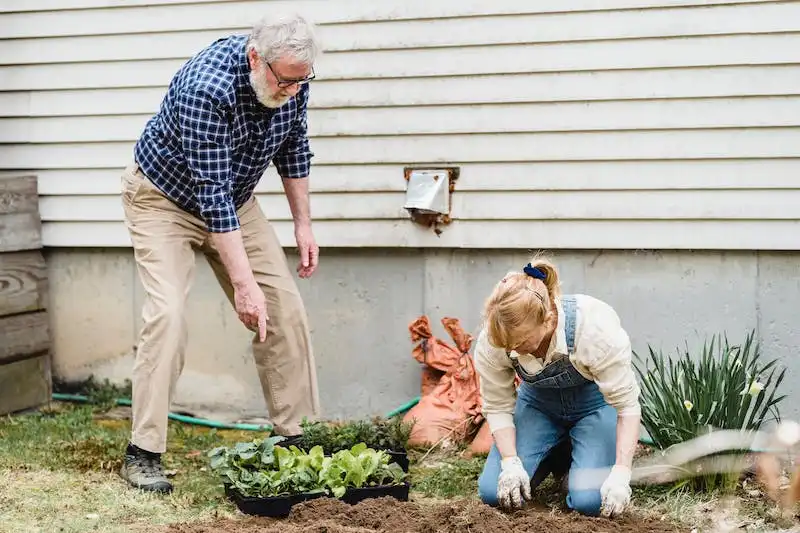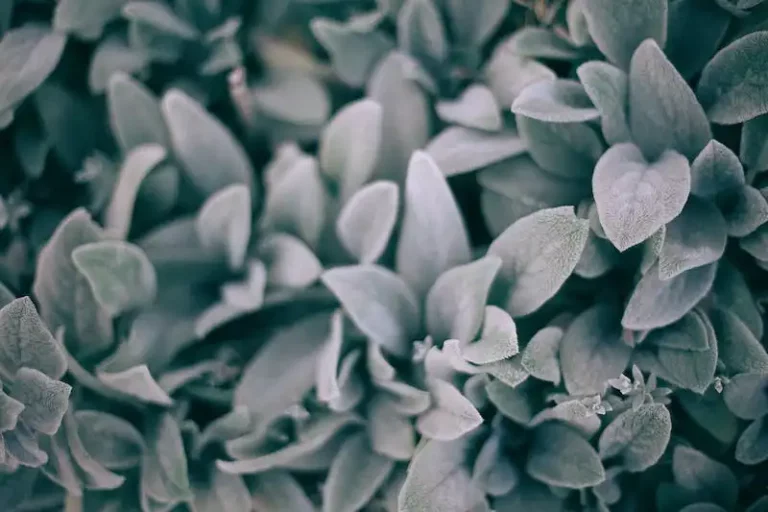Chamomile is an herb that is known for its soothing and medicinal benefits. It is often used in teas and herbal remedies to help calm the mind and body. If you’re interested in growing your own chamomile, there are a few simple tips you can follow to ensure success.
First, you’ll need to choose the right location for your chamomile plants. Chamomile prefers full sun but can also tolerate some shade. It is a hardy herb that can be grown outdoors year-round in most climates, as long as it is protected from frost. If you live in a colder climate, you can also grow chamomile indoors.
To plant chamomile, you can either buy seedlings or start from seeds. If you choose to start from seeds, you’ll need to sow them directly into the soil. Chamomile seeds are very small and can be difficult to handle, so take care when planting them. Sow the seeds between Jul and Sep, and cover them lightly with soil.
Chamomile plants are known for their small white flowers with yellow centers. The flowers bloom throughout the summer months, and you can harvest them for their medicinal properties. Once the flowers are fully bloomed, you can start harvesting them by cutting off the inflorescences and collecting the petals.
After harvesting, chamomile flowers can be used in a variety of ways. They can be dried and used to make tea, or the petals can be used to make herbal infusions and recipes. Chamomile contains a compound called chamazulene, which gives it its soothing properties.
To keep your chamomile plants healthy, make sure to water them regularly and keep the soil moist but not waterlogged. Chamomile prefers well-draining soil, so you may need to amend your soil with compost or other organic matter. It’s also important to thin out the seedlings as they grow to ensure that the plants have enough space to spread and grow.
In conclusion, growing your own chamomile can be a rewarding experience. With the right advice and care, you can enjoy the benefits of this soothing herb year-round. Whether you choose to grow chamomile indoors or outdoors, you’ll find that it’s a relatively low-maintenance plant that can thrive in a variety of conditions. So why not give it a try and start growing your own chamomile today?
Growing Chamomile Indoors: The Soothing Herb We Need All Winter
Chamomile is a popular herb known for its soothing properties. With its delicate and daisy-like flowers, it’s not only a beautiful addition to any windowsill but also a valuable herb that can be used in teas, skincare products, and more. Growing chamomile indoors allows you to enjoy its benefits all year round, even during the winter months when fresh herbs are hard to come by.
Types of Chamomile
There are two main types of chamomile that are commonly grown – German chamomile (Matricaria chamomilla) and Roman chamomile (Chamaemelum nobile). German chamomile produces larger flowers with a white center and is mainly used for herbal remedies. Roman chamomile, on the other hand, has smaller flowers with a yellow center and is often used for making tea.
Growing Chamomile from Seeds or Transplants
If you’re starting from seeds, sow them in a well-drained potting mix in early spring. Keep the soil consistently moist, and you’ll start to see the seedlings emerge in about a week. Thin them out once they have a few true leaves to prevent overcrowding.
If you prefer to start with transplants, you can buy chamomile plants from a local nursery or online. Transplant them into a larger container with well-drained soil, and place them by a sunny window where they can get at least 6 hours of direct sunlight each day.
Container Requirements
Chamomile plants don’t have particularly deep roots, so you can use any container that is at least 6 inches deep. Make sure the container has drainage holes to prevent waterlogged roots. If you’re growing more than one chamomile plant, space them about 9 inches apart.
Optimal Growing Conditions
Chamomile prefers cool temperatures, ideally around 60°F (15°C). It can tolerate some frost, but it should be brought indoors if your area experiences harsh winter weather. Water the plants regularly, keeping the soil evenly moist but not waterlogged.
Harvesting Chamomile
The flowers of chamomile are the parts most commonly used. Harvest the flowers when they are fully open, but before they start to fade. Simply use your fingers or scissors to cut the flower heads from the plant. You can use the fresh flowers to make tea, or dry them for later use.
The Benefits of Chamomile
Chamomile has been used for centuries for its medicinal properties. It is known for its calming and relaxing effects, making it a popular herbal remedy for stress and anxiety. Chamomile contains a compound called chamazulene, which is believed to have anti-inflammatory properties. It can also be used topically to soothe skin irritations and promote healing.
Final Tips
– Chamomile plants grown indoors may not reach the same size as those grown outside, but they will still produce flowers and foliage.
– Always buy seeds or transplants from reputable sources to ensure you’re getting the right chamomile variety.
– You can use chamomile flowers to make a refreshing tea by steeping them in hot water. Add honey or lemon for taste.
– If you’re new to gardening, growing chamomile is a great way to start. It’s a low-maintenance plant that requires minimal care.
– Stay updated with the latest tips and tricks on chamomile growing and harvesting from horticulture websites or gardening forums.
Whether you’re a seasoned gardener or just starting out, growing chamomile indoors is a rewarding experience. Not only will you have a fresh supply of this soothing herb, but you’ll also enjoy the beautiful flowers and the calming aroma they bring to your home.
Benefits of Chamomile Tea
Chamomile tea is a popular herbal drink known for its many health benefits. Here are some reasons why you should consider adding chamomile tea to your regular diet:
- Relaxation: Chamomile tea is known for its soothing properties that can help you relax and unwind. Enjoy a cup of chamomile tea before bed to promote a good night’s sleep.
- Stress Relief: Drinking chamomile tea regularly can help reduce stress and anxiety levels. Its calming properties have a positive impact on your mood and overall well-being.
- Anti-Inflammatory: Chamomile tea contains compounds that have anti-inflammatory effects. Consuming chamomile tea regularly may help reduce inflammation in the body.
- Digestive Aid: Chamomile tea has been used for centuries to soothe digestive issues such as indigestion, bloating, and stomach cramps. It can help relax the muscles in the gastrointestinal tract and promote healthy digestion.
- Immune Support: Chamomile tea contains antioxidants that help boost the immune system. Regular consumption of chamomile tea can help strengthen your body’s natural defenses.
- Skin Health: Chamomile tea can be used topically to soothe skin irritations such as eczema and rashes. It can also be used as a natural toner to reduce redness and inflammation.
- Menstrual Relief: Chamomile tea can help relieve menstrual cramps and other symptoms associated with menstruation. Its calming properties can help relax the muscles and reduce discomfort.
These are just some of the many benefits of chamomile tea. Whether you choose to grow your own chamomile plants or buy chamomile tea from the store, incorporating this herbal drink into your daily routine can do wonders for your health and well-being. Give it a try and enjoy the soothing and medicinal properties of chamomile tea.
If you have any questions or tips on growing chamomile or using chamomile tea, please leave a comment below. We’d love to hear from you!
Types of Chamomile
There are several types of chamomile that you can grow in your garden. Some of the most common varieties include:
1. German Chamomile (Matricaria chamomilla): This variety is commonly grown from seed and is regularly used for making chamomile tea. German chamomile has daisy-like flowers with white petals and yellow cone-shaped centers.
2. Roman Chamomile (Chamaemelum nobile): Roman chamomile is a perennial herb that makes for a great ground cover. It has small, daisy-like flowers with white petals and yellow centers. Roman chamomile is often used in recipes and for its soothing benefits.
3. Wild Chamomile (Anthemis arvensis): Also known as corn chamomile, this type of chamomile is a winter annual. It has feathery, fern-like foliage and white flowers with yellow centers. Wild chamomile is often found growing wild in Europe and is used for its medicinal properties.
4. Egyptian Chamomile (Matricaria aurea): Egyptian chamomile is a tall-growing annual with fern-like foliage and small white flowers. It is commonly used for making chamomile tea and is known for its calming effects.
When identifying chamomile plants, you should always look for the characteristic daisy-like flowers and feathery foliage. It’s important to note that there are several other plants that resemble chamomile, so if you’re unsure, it’s best to ask for advice or consult a gardening resource.
Regardless of the type of chamomile you choose to grow, they all have similar care requirements. Chamomile plants prefer full sun and well-draining soil. They can be grown from seed or purchased as young plants. Chamomile plants should be regularly watered and thoroughly soaked, but be careful not to overwater as they can be sensitive to root rot.
Chamomile plants can be grown both indoors and outdoors. If you’re growing chamomile indoors, make sure to place the plants in a sunny window where they can get at least 6 hours of sunlight per day. If growing outdoors, choose a spot with well-draining soil and good air circulation.
Chamomile plants should be harvested when the flowers are fully open. To harvest, simply cut the flower heads from the plant and dry them in a warm, dry place. Once dry, you can use the flowers to make tea or other herbal preparations.
In conclusion, growing chamomile can be a simple and rewarding part of your gardening journey. Whether you choose to grow it for its medicinal benefits, soothing properties, or simply for its beautiful flowers, chamomile is a versatile herb that can thrive in a variety of growing conditions.
How To Grow Chamomile Indoors
Growing chamomile indoors is a simple and rewarding way to have your own herbal remedy right at your fingertips. Whether you want to enjoy the soothing benefits of chamomile tea or use it for its medicinal properties, growing chamomile indoors is a great option.
Chamomile plants are drought-tolerant and can be grown in containers. They prefer well-drained soil and should be placed in a spot that receives at least 6 hours of sunlight per day. You can buy chamomile seedlings or start from seed, either way, make sure to use a well-draining potting soil mix.
Chamomile can be grown from two main types of chamomile: Matricaria recutita and Anthemis nobilis. Matricaria recutita, also known as German chamomile, is often grown for its medicinal properties and double cone-shaped flowers. Anthemis nobilis, also known as Roman chamomile, has more branched foliage and daisy-like flowers. Both types can be grown indoors.
To grow chamomile indoors, start by planting the seeds or seedlings in a container filled with well-drained potting soil. Water thoroughly and keep the soil moist but not waterlogged. Chamomile plants should be thinned to allow for proper growth and airflow. Once your chamomile plants reach a height of about 1 to 2 inches, thin them to about 6 inches apart.
Chamomile plants can be harvested once they start to bloom. Simply snip off the flowers just above the foliage. If you plan on using the flowers for tea or medicinal purposes, harvest them in the morning after the dew has dried. The flowers can be used fresh or dried for later use.
Chamomile plants are relatively pest-free but may attract some pests like aphids or spider mites. Regularly inspect your plants for any signs of pests and take appropriate measures to control them, such as using insecticidal soap or natural predators.
When winter comes, chamomile plants may die back, but they will usually come back in the spring. If you want to continue growing chamomile indoors during the winter, consider providing supplemental lighting to ensure proper growth.
In conclusion, growing chamomile indoors is a simple and rewarding horticultural activity. With just a few plants, you can have an abundance of soothing chamomile flowers to enjoy throughout the year. Whether you are a tea lover or want to reap the medicinal benefits of chamomile, growing your own chamomile indoors is a satisfying and beneficial endeavor.




